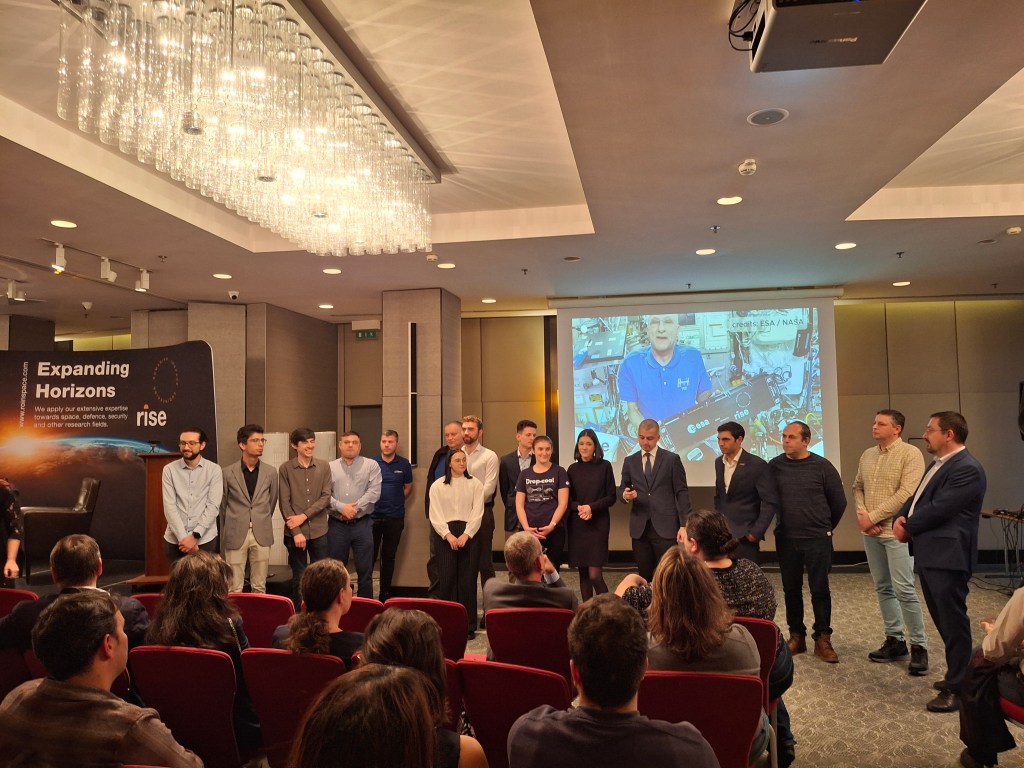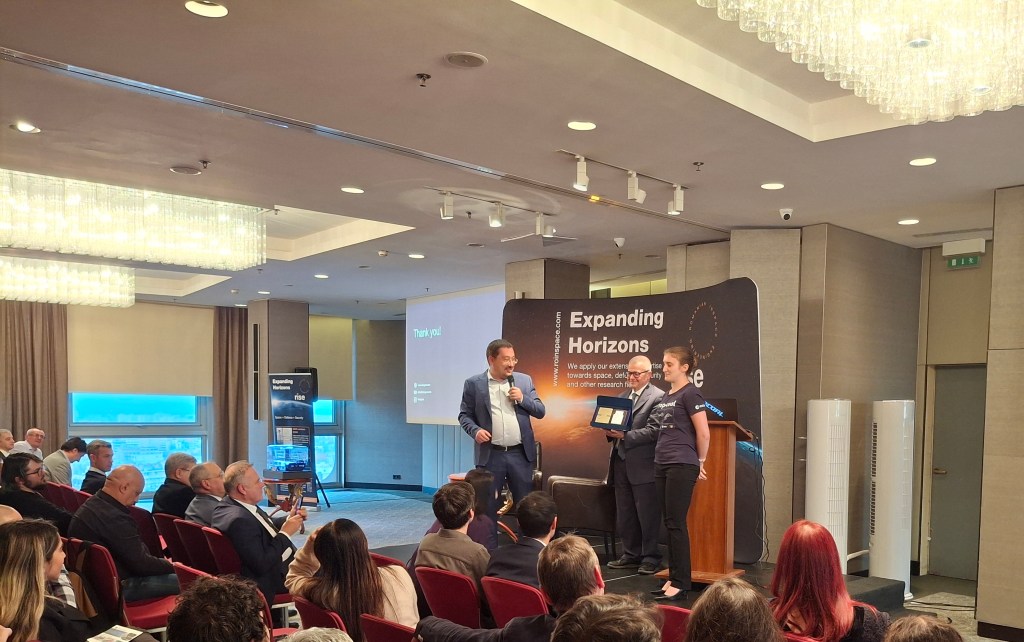When talking about the device produced in Romania that is mounted and works successfully on the International Space Station, in the manufacture of which she participated, the face of Ionela Alexandra Gâză lights up. The passion is read in his eyes, it descends in the wide gestures of his hands and then he realizes it completely.
Ionela Gâză is a mechanical engineer. He graduated from the Faculty of Aerospace Engineering, specializing in aerospace construction. Ever since she was little, she wanted to become an astronaut. Then from the 3rd grade until the end of high school, he participated in the astronomy and astrophysics courses provided by the Children’s Palace in Suceava. “I haven’t given up on the idea of becoming an astronaut, but the passion for what I do now is enough to keep me here on Earth,” he said in a discussion with HotNews.ro.

He says that the best moment he experienced was participating, at NASA’s Kennedy Space Center in Florida, in the launch of the rocket that brought the device he helped make to the Space Station. “It’s a feeling once in a lifetime. If you meet…”, says Ionela.
“The passion with which we worked prevented us from giving up. Failure was not an option”
It took the technical team behind the project three years to complete its work. “We collaborated with the European Space Agency, which helped us throughout the realization of this experiment. They told us what they expected from us, and we thought about this device, then we developed the hardware part, the “we tried…”, Ionela Gâză simplified the team’s efforts.
Was it difficult to work on the device? “I don’t know if it was difficult. I just know it was beautiful,” he says.
Two teams worked on the device – that of scientists, who knew exactly what they wanted, and that of engineers, who knew how what the science team wanted to be translated into practice. And sometimes, the two teams spoke different languages.
“The collaboration between two teams with different ways of communicating, of understanding, was not always perfect. The science team and the engineering team, led by ESA, had to learn to communicate in a common language. There were times when maybe we didn’t understand each other, of course. We always had meetings to clarify, to make sure that each one understood what the other wanted to say,” remembers Ionela.

If he came to leave? “But never!” “Some of the tests were imposed by ESA, others were imposed by us, to make sure that things go according to the book. Because you can’t go wrong with projects like this! The passion with which we worked prevented us from giving up . Sure, maybe some of us reached the limit of our internal ropes of resistance, but failure was not an option,” explains Ionela Gâză.
“We had to adapt to working with astronauts on the ISS“
For his part, Claudiu Cherciu, researcher in Romanian InSpace Engineering (RISE), recalls how the project “DropCoal” (Droplet Coalescence) started, about three years ago, when the European Space Agency launched a call for projects.
The DropCoal (Droplet Coalescence) project is an experimental study by the European Space Agency (ESA) to understand how droplets form in space.
Dropcoal studies how water and ethanol droplets of different sizes behave when they collide at different speeds. A high-speed camera records the interaction and mixing process. This research can help scientists improve drug formulations and delivery methods, as well as fuel combustion models in the microgravity environment.
It aims to provide insights into phenomena such as the formation of clouds and raindrops, fuel combustion and material interactions. The project can help long-duration space missions, where understanding fluid dynamics in microgravity is crucial.
“We applied, they wanted to build a device – a kind of small mobile laboratory – to be installed on the European Space Station to help researchers advance their space studies. We had to adapt our experiments to be compatible with all the launch requirements: rocket vibrations, working with astronauts on the ISS, remote operation and so on,” says the Romanian researcher.
In the test side, they have to turn to external partners to help, because they could not do all the tests in the country.

He says there were times that gave him a headache – from liquid sterilization and degassing, to vibration and electromagnetic compatibility tests, for example.
“We had to redo part of the electrical interface, add more filters so as not to affect other experiments on the space station. And from the point of view of human safety, they were very tight. If we put in danger to the lives of the astronauts, there was no way to go on board.
In the Roman experiment, they worked with water and a solution of 10% ethanol. “This meant building two airtight enclosures so that not a single drop of water or 10% ethanol would escape the astronauts. I believe that 10% ethanol is dangerous for astronauts if it gets into their eyes , and that’s why we have this double level of protection,” explained the engineer.
“In space there is no plan B. We cannot intervene physically, and information is transmitted with a delay“
The IT security part was provided by Bitdefender. “For projects like this, every detail counts. In such a context, you may wonder why cyber security is important. Missions like DropCoal operate in space and operate using very sensitive data. And the protection of a device in space comes with great risks. There is no plan B we cannot physically intervene here and the information is transmitted late,” says Paul Butnaru, head of product at Bitdefender.
RISE, as the main contractor of this project, designed, manufactured and implemented the necessary device to form, monitor and control the formation of droplets and their frontal collision.
This prototype will be included in the International Space Station in November 2024 to use the microgravity environment.
A second model has been contracted to fly with The Exploration Company’s Nyx capsule in Q3 2025.
The video below shows the first coalescence experiment performed in microgravity on the International Space Station and ordered by the operations center at RISE. The experiment succeeded at the first attempt, being generated after the independent confirmation of the functionality of all systems.
ISS astronauts sent a video message of encouragement to Romania
